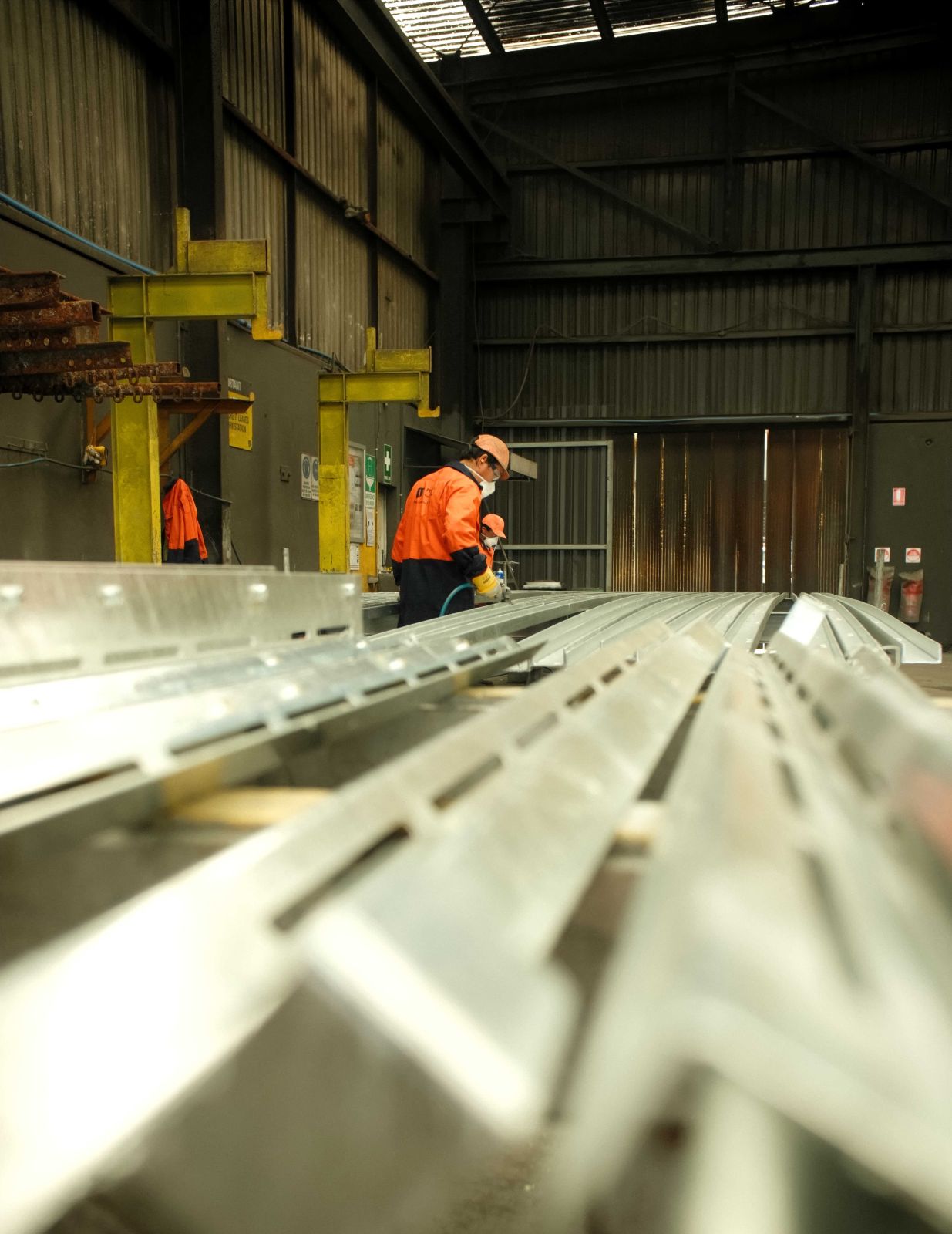Design
Technical Information
It is essential that an article of steel be designed in accordance with specific guidelines so as to optimise it for hot dip galvanizing. This both increases the lifespan of the galvanized steel, and makes the galvanizing process safer. AS/NZS 2312.2 provides excellent design advice, which we cover in this section.
Venting & Draining
Before galvanizing, it is important that steel articles be fitted with vent holes. Without vent holes, any moisture trapped inside the steel article will become superheated when dipped in molten zinc. This rapid, sudden expansion will lead to an explosion, thereby destroying the article. Therefore, these vent holes allow for steel to be dipped in pre-treatment solutions, ensuring a cleaner surface (and consequently higher-quality galvanizing) as well as safer galvanizing.
Holes should at least be 10mm in diameter, and not located on the centre of end plates or connections. We also understand that hole placement can be an aesthetic issue for steel articles. This can be addressed at the design stage. For example, the addition of hollow or open structural sections will effect the amount, type and location of holes needed for draining for the article to be safely galvanized. For more information, you can read the guidelines set out by the Galvanizers Association of Australia (GAA): https://gaa.com.au/venting-draining-guide/
Size Limitations
Our galvanizing kettle has the following dimensions:
Length: 9.2m
Width: 1.6m
Depth: 2.7m
Any steel article that we galvanize has to be within these dimensions. More practically, only 2.4m of the tank depth can be used, and we don’t exceed a width of 1.5m in the kettle and 1.45m in the alkaline caustic degreaser tank.
Durability
Many design, site specific or environmental factors effect the corrosion rate (and therefore durability) of steel. The GAA provides a durability estimator which determines the corrosiveness of location, and the estimated lives to first maintenance of galvinizing and duplex systems found using interpolation of AS/NZS 2312.2. The estimated life to first maintenance of paint-only systems are found using interpolation of AS 2312.1. The estimator can be found here: https://gaa.com.au/durability-of-galvanizing-estimator/
Get in Touch
"*" indicates required fields

Call us today for a confidential discussion on your
NEXT PROJECT


